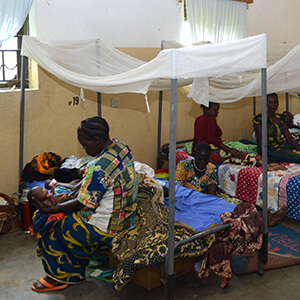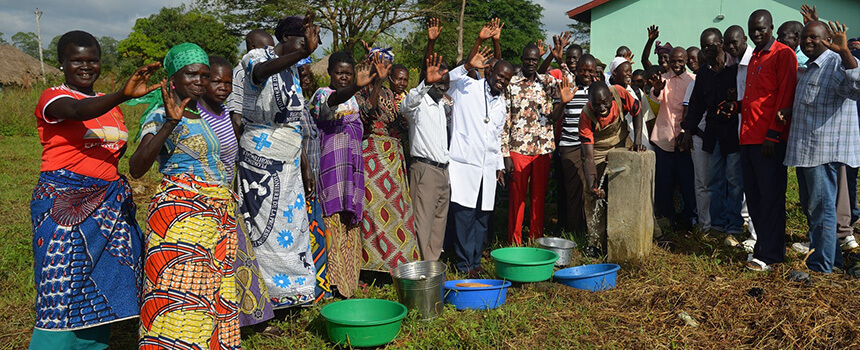 Water on!
Water on!
Sunny outlook for a hospital in the Democratic Republic of the Congo
It is hot. Over 30 degrees centigrade every day. The dusty streets make you want a cold shower – but none is to be had. No water of any kind is available around here. The last drop has come out of the tap about two hours ago, and now all is stillness. The diesel generator that usually powers the centrifugal pump for providing water to this small hospital is silent. But the hospital itself does not stand still: Doctors and nurses are almost constantly rushing about in order to take care of all their patients. Problems with a lack of diesel fuel to keep the water supply going is nothing new to this hospital in Adi in the Democratic Republic of the Congo. Here diesel is expensive and getting it is a lot of trouble. The effect of insufficient infrastructure is most pronounced during the rainy season – when the road is often impassable. But a hospital cannot function without access to clean water.
Necessity
Enough and reliable running water for a hospital in Adi, DRC.
Activity
Together with hospital technicians, the Institute Water for Africa e.V. buys and installs a solar pump and trains them in its operation and maintenance.
Countable effort
Number of patients, their families and the staff that are provided with enough clean water on a daily basis.
Result
There is a reliable water supply around the clock. The hospital saves on diesel, money and time which can be better spent on caring for patients.
Systemic effect
The solar pump helps to improve the health of the patients. The occurrence of waterborne diseases will be reduced. Saving diesel protects the environment.
Background
The Democratic Republic of the Congo is almost 7 times larger than Germany. Large parts of the country are densely wooded and decades of conflict and corruption have hindered the development of working infrastructure.
Adi is situated where the borders of Uganda, South Sudan and the DRC meet. The supply of food and trade goods happens by motorbike from the Ugandan city Koboko. Adi itself is not connected to the public electricity and water supply, but there is a 152-bed mission hospital. For a long time, the water – which is essential for the trouble-free operation of the hospital – had to be carried there from a spring. That meant up to 500 canisters per day!
But now the diesel-powered centrifugal pump takes care of the water supply of the hospital. However, the cost of running it often exceed the financial means of the mission hospital, which results in a lack of water. No diesel, no water. This cycle tends to seriously trip up the smooth running of the hospital.
The good deed
The Institute Water for Africa will buy a solar-powered water pump in Kampala, Uganda, transport it to Adi and install it together with the hospital’s technical staff. These will then be trained in how to operate and maintain the equipment. The solar pump allows a high degree of automation for the water pumping with little effort. That way the overhead water tank always has sufficient water, and can in turn provide enough clean water to the hospital at all times.

AboutDemocratic Republic of the Congo
Kinshasa
Capital
78 736 200
Number of inhabitants
495
Gross domestic product per capita per year
176
Human Development Index
By area, the DRC is the second largest country in Africa. It has the most rain forest on the continent. More than 200 ethnic groups live here. The capital Kinshasa is Africa’s third largest city.
About the organization and further information
Association
Institute Water for Africa e.V.




